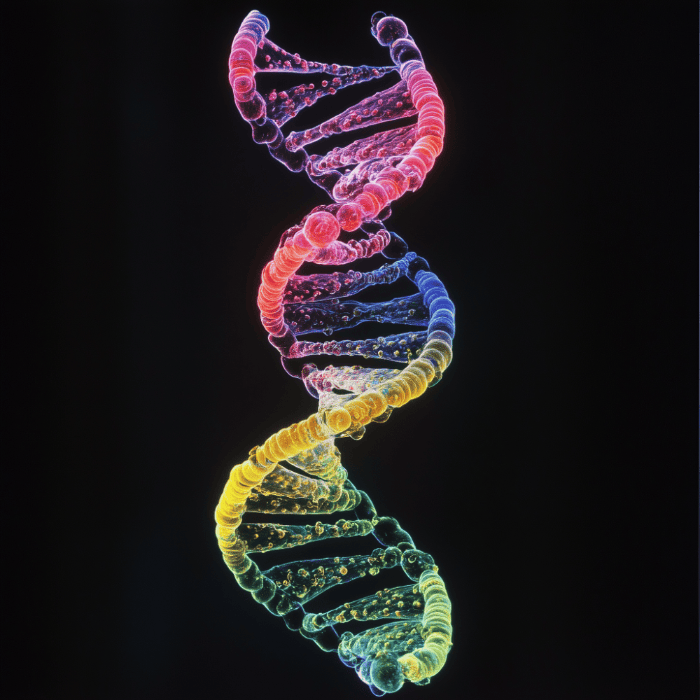New CRISPR editing technique removes methylation marks to reactivate silenced genes
Researchers have developed a third-generation CRISPR technique that modifies gene expression by removing methylation marks rather than cutting DNA sequences. The approach uses catalytically dead Cas9 proteins fused to demethylating enzymes, offering a potentially safer alternative to conventional gene editing for treating inherited blood disorders including sickle cell disease and β-thalassemia.
Catalytically dead Cas9 enables methylation-specific targeting
The technique, reported in Nature Communications on 27 July 2025, employs dCas9 fused to TET1 catalytic domains (TETv4) that specifically remove methyl groups from cytosine residues at targeted genomic locations. Unlike traditional CRISPR-Cas9 systems that create double-strand DNA breaks, this epigenome editing approach uses guide RNAs to direct demethylating enzymes to precise CpG sites without causing genomic damage.
Research teams at the University of New South Wales and St Jude Children’s Research Hospital demonstrated that targeted demethylation of foetal haemoglobin gene (HBG) promoters successfully reactivated gene expression in both immortalised cell lines and primary human erythroblasts derived from CD34+ haematopoietic stem cells.
“Whenever you cut DNA, there’s a risk of cancer. And if you’re doing a gene therapy for a lifelong disease, that’s a bad kind of risk,” explains Professor Merlin Crossley, study lead author and UNSW Deputy Vice-Chancellor Academic Quality. “But if we can do gene therapy that doesn’t involve snipping DNA strands, then we avoid these potential pitfalls.”
Methylation maintenance mechanism identified through genetic screening
Through CRISPR-Cas9 screening of 776 genes encoding ubiquitin proteasome system components, researchers identified UHRF1 as a key mediator of HBG gene silencing. UHRF1, which facilitates maintenance of CpG methylation during DNA replication by recruiting DNMT1 to hemi-methylated sites, emerged as a critical regulator alongside known repressors BCL11A and ZBTB7A.
Loss of UHRF1 function caused global demethylation and HBG activation that could be reversed through localised promoter re-methylation using dCas9-DNMT3A-DNMT3L fusion proteins. This bidirectional control demonstrated the causal relationship between promoter methylation and gene silencing.
The authors report: “Our findings demonstrate that localized CpG methylation at the HBG promoters facilitates gene silencing and identify a potential therapeutic approach for β-hemoglobinopathies via epigenomic editing.”
Therapeutic implications for β-hemoglobinopathies
The research addresses β-hemoglobinopathies, inherited blood disorders affecting millions globally where mutations in adult β-globin genes cause red blood cell dysfunction. Reactivating foetal haemoglobin production, which naturally occurs during fetal development but becomes silenced perinatally, represents an established therapeutic strategy for these conditions.
TETv4-directed demethylation of HBG promoters in primary CD34+ cell-derived erythroblasts achieved approximately 35% foetal haemoglobin expression compared to 7-8% in controls. Importantly, gene activation persisted for months in culture, suggesting durable therapeutic effects without ongoing intervention.
“You can think of the foetal globin gene as the training wheels on a kid’s bike,” Professor Crossley explains. “We believe we can get them working again in people who need new wheels.”
Mechanistic insights reveal multi-site methylation requirement
Detailed methylation analysis revealed that HBG repression depends on coordinated methylation across multiple CpG sites within proximal promoter regions upstream of transcription start sites, rather than single critical locations. The research identified strong negative correlations (r = -0.72) between upstream methylation levels and gene expression.
This pattern supports a model where methylation density creates binding platforms for the MBD2-NuRD co-repressor complex, which requires CpG methylation for stable genomic association. Mutation of MBD2’s methyl-CpG binding domain (Y178F) significantly reduced HBG repression, confirming methylation-dependent silencing mechanisms.
The authors demonstrate that “CpG methylation operates in concert with BCL11A and ZBTB7A occupancy to stably recruit MBD2-NuRD to the HBG promoters, which remodels local nucleosome structure to establish silencing.”
Clinical translation pathway and safety considerations
The proposed therapeutic approach involves ex vivo modification of patient haematopoietic stem cells using TETv4 systems to remove methylation marks from fetal globin genes before reinfusion. This strategy circumvents safety concerns associated with DNA cutting approaches whilst potentially providing lifelong therapeutic benefit through sustained gene reactivation.
Study co-author Professor Kate Quinlan emphasises the safety advantages: “We are excited about the future of epigenetic editing as our study shows that it allows us to boost gene expression without modifying the DNA sequence. Therapies based on this technology are likely to have a reduced risk of unintended negative effects compared to first or second generation CRISPR.”
Broader applications for genetic medicine
The precision of dCas9-guided epigenome editing extends potential applications beyond blood disorders to any condition involving inappropriate gene silencing through methylation. The reversible nature of epigenetic modifications offers unique therapeutic opportunities for diseases where permanent genetic changes may be undesirable.
“Perhaps the most important thing is that it is now possible to target molecules to individual genes,” Professor Crossley notes. “Here we removed or added methyl groups but that is just the beginning, there are other changes that one could make that would increase our abilities to alter gene output for therapeutic and agricultural purposes. This is the very beginning of a new age.”
Before clinical trials, researchers will validate the approach in animal models and investigate additional epigenome editing tools. The work establishes fundamental principles for methylation-based gene control and provides a framework for developing safer genetic therapies across multiple disease contexts.
Reference
Bell, H. W., Feng, R., Shah, M., et. al. (2025). Removal of promoter CpG methylation by epigenome editing reverses HBG silencing. Nature Communications, 16, 6919. https://doi.org/10.1038/s41467-025-62177-z


